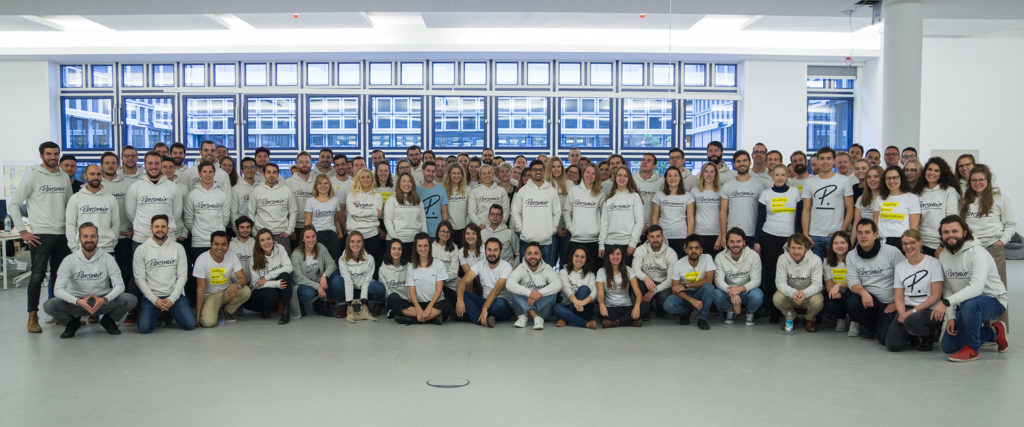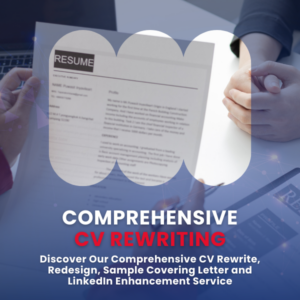
Enabling efficient Human Resource Management for organizations is the core guide of daily work at Personio. This includes developing a holistic HR and applicant management software designed to give HR managers more time for tasks that create and maintain value. Personio has decided to champion the battle paperwork and never-ending, complicated Excel charts. The group has set itself the ambitious goal to foster the digitization of human resources departments in small and medium-sized enterprises. With their single software for all HR processes, it enables HR managers to focus more on valuable HR management. They are striving to be an active part of the HR management future and tailor their products to the needs of modern companies. We are proud to announce the innovative team will be joining us for the Munich Tech Job Fair. Grab yourself a ticket to the event here!
Who We Are
Personio was founded in 2015 by Hanno Renner, Roman Schumacher, Arseniy Vershinin and Ignaz Forstmeier. The management team has its roots at the Center for Digital Technology Management (CDTM) in Munich, a hub for a range of successful startups.
We are an ambitious, digital, and international team with 249 employees; our headquarters are located in Munich, Germany. We work in an analytic but creative manner and treat each other respectfully. Our culture is characterized by an open-minded but down to earth atmosphere.

Products
Personio Human Resource Analytics & Reporting
Writing Job Descriptions With Impact – Here Is How
The majority of job ads these days bore with uninspiring standard jargon that makes readers yawn, rather than triggering a flood of applications. As a result, great recruiting potential is being wasted. Here is how you can write job ads that are guaranteed to grab people’s attention and will appeal to the candidates you want.
Job ads are one of the most important tools in e-Recruiting. According to Statista, 34 percent of all new hires are found through online job portals, and roughly 30 percent through company websites. Despite these strong numbers, many companies do away with standard wording in their job ads. That’s a mistake!

Writing Job Ads: It’s an HR Responsibility
The writing of job ads is an art in itself. They have to be catchy, fit the company, appeal to the right target audience and must not violate any laws. However, most advertisements are based on a template that was set up years ago and only requires the position title, job responsibilities and requirements to be entered. Often, HR will provide a template, and the relevant department enters the description, which is then published without being further reviewed.
This is a poor practice that can lead to having to sort through multiple applicants that have reacted to your vaguely worded ad but are not suitable.
Writing Job Ads: Five Easy Tricks
What can you do to make your job ad stand out from the crowd and attract qualified, suitable applicants? The following tips will help:
1. Concise Job Title
The job title is critical for potential applicants to find your advertisement using search engines and on online job portals. Formulate a title, 10 to 80 characters in length, and use common position titles that are as accurate as possible. Ask yourself: Which term would an applicant I want to appeal to enter in a search field?
For example: If an “Online Marketing Manager” is hired to primarily look after social media profiles, would “Social Media Manager” not be more suitable as a title? Is “Inside Sales Manager” actually a known term to my target audience, or would “Sales Manager (Back Office)” be better? Nobody searches the internet for “Sales Ninja” or “Customer Guru.” These titles may sound creative – but wouldn’t job hunters much rather search along the lines of “call centre/customer service employee”?
Important: We are talking here about the job title, not the job description itself. In the description, in contrast, you can and should be creative to make an impact. The “Sales Ninja” or “Customer Guru” for example may appear in the first paragraph as you describe your dream candidate. A good example of this can be found on the career page of video production firm Mynd. While they kept the job titles concise, the wording in the first paragraphs is more abstract and customised, and it provides a sense of the company’s culture.

2. An Attention-Grabbing First Paragraph
The first paragraph decides whether the job seeker will continue to read or click the “Back” button to move on to the next ad. So, pay particular attention to this paragraph when writing your ad.
Sentences like “We are looking to fill the position of…” or the usual standard company description will not spark interest. Instead, use this space to state the strongest and most interesting arguments that speak for your company and this position. Think about what points would grab the attention of your ideal applicant.
3. Complete And Accurate Job Description
Be honest and concrete as you describe the responsibilities of the position. Applicants should get a clear picture of what awaits them, what their typical workday would look like, whether they are required to travel, can organise their work independently, or are expected to fulfil set quotas. If their work largely consists of routine duties, don’t promise “exciting and varied” tasks or a “high level of own responsibility.”
State the scope of their authority and responsibilities, particularly with executive positions. In which areas will the candidates have decision-making authority? Who will be reporting to them? Is the responsibility for sales and/or personnel part of the position?
A perceived 99 per cent of all job ads are missing the information where a position is actually located in the company organisation, and what the team and management structure looks like.
These aspects are extremely important, especially to young, qualified Gen-Y applicants. They want to know: Will they just be a small cog in a big wheel of teams and have to follow the “chain of command”? Can they work with other teams, will they have contact with management and be able to contribute their ideas? Everyone has “flat hierarchies,” it seems. Describe these points concretely to appeal to applicants who will feel comfortable in your organisation and have the right expectations.
4. Realistic Job Requirements
List the required skills, training qualifications, certifications and minimum job experience. Rather than saying “initial” or “several years of” experience, state your requirements in the job ad more concretely, e.g. “minimum one year” or “three to five years.”
Don’t forget to mention qualifications that are desirable but not necessarily crucial (i.e. nice to have). Make a clear distinction between these and your minimum requirements. The term “ideally” is not necessarily an elegant way to say it – but is understood by applicants.
Be realistic. There is no such thing as a “young and dynamic team player with at least 20 years of experience.” Particularly when using templates, you should review the job requirements for each position. Does the candidate really need to have foreign language skills? Is experience with a specific software a must? Or could the new hire also be trained to use it? Does it really need to be said in every job description that the candidate should be a “team player” and “able to work under pressure”?
Make it clear which qualifications you expect, and who should not apply – but without scaring off suitable candidates by putting too much emphasis on your dream image. The basis for a good requirement profile is that an in-depth conversation takes place between the relevant department that hires and HR.
5. Providing A Sense If The Company Culture
Your company culture should be reflected in all areas of the job ad – from content through to wording. A description of your company, the (additional) benefits that are offered to employees, as well as an outlook on future development opportunities are a must in every job ad. The purpose here is much more than just information.
Applicants shall be enabled to assess whether they can identify with your business, can see themselves in it and would feel comfortable. Does it feel like a competitive environment or more like a family? Do your company value sustainability and social responsibility? Is it family-friendly? Will the employee be fostered and given room to develop?
Use the requirement profile to sift out unqualified applicants. If you then also convey an attractive and authentic reflection of your company, you will be appealing to exactly those applicants that will fit your organisation and want to stay with you long-term. You will distinguish yourself from the competition and give applicants reasons to choose you over others.
Other Important Aspects When Writing A Job Ad
Completeness: Be sure to cover all the required information in your job ad. Sounds trivial, but given the amount of details, it is easy to overlook something.
Salary: True to the motto “One doesn’t talk about money,” the job ads of German companies rarely contain salary details. However, in many other countries, it is common to at least state a salary range. Think about whether you want to make use of this feature and stand out from the crowd this way. This would also help you avoid spending unnecessary resources and time on applicants who have salary expectations beyond your budget.
Professional perspectives: Don’t just put requirements on your applicants. Offer them an outlook, too – on learning potential. Which skills will they gain through the position? What career perspectives can they expect in the long term? This will give applicants an even more accurate picture of the position. And you will win by getting more suitable candidates because you will primarily attract people who have the desire to tap exactly this learning potential.
Discriminatory wording: According to the German General Equal Treatment Act (AGG), job postings must never make reference to gender, race or ethnic background, religion or ideology, disability, age or sexual identity. At least when these criteria are not explicitly required to carry out the activity. This goes a lot further than just the use of gender-neutral forms with job titles, such as the ever-present “(m/f)”. For example, you can put “fluent German” as a requirement, but not “native German language skills.”
Nowadays, many companies even have their job advertisements written by external copywriters. If you have a hard time creating succinct and catchy job descriptions, why not get help.
Nothing But Outstanding Job Ads!
You want to have qualified employees who inspire and stand out from the crowd? Then your job ads should do the same. Job ads are the first form of contact with your company for many potential candidates. They determine whether the right or the wrong people will apply (or even no one at all). Don’t think of writing job ads as just another routine task, and don’t leave your departments alone with it.
Find Personio at Website Twitter Facebook
Looking for a job, your next co-founder, or recruiting your tech talent? Techmeetups presents the Munich Tech Job Fair tailored to these tech needs. Visit Tech Events for more information about the events and how you can get more out of the experience and also get yourself a ticket to an event!
Website: Techmeetups.com visit and treat yourself to a community of tech business events and support!
TechMeetups.com 9 years. 25 cities. 81 job fairs. 1500+ hiring companies. 60,000+ job seekers.





